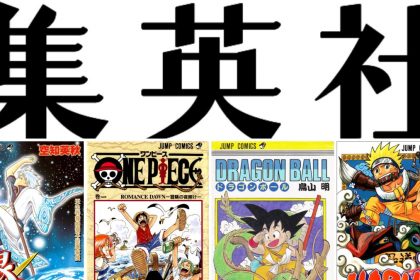In the vibrant and dynamic world of anime, shonen has long been a genre that captivated audiences worldwide. But, have you ever wondered about the portrayal of female characters in this male-dominated genre? Historically, Female Representation in Shonen Anime has been a topic of much debate and discussion. The damsels in distress and the sidekicks – is that all there is to female characters in shonen anime? Well, not anymore! Modern shonen anime is breaking barriers and challenging gender norms, bringing a fresh perspective to female representation. Let’s dive into this transformation and see how shows like “Jujutsu Kaisen” are leading the charge!
Historical Context of Female Representation in Shonen Anime
Traditional Roles and Stereotypes
Once upon a time, in the realm of shonen anime, female characters were often confined to the shadows of their male counterparts. They were the damsels in distress, waiting to be rescued, or the supporting characters whose narratives revolved around the male protagonists. Stereotypes and traditional roles were the norms, limiting the depth and development of female characters. But why was this the case? Was it a reflection of societal norms, or was there more to the story?
The Target Audience and its Influence
Shonen anime, primarily targeted at young males aged 14-18, had a significant influence on the portrayal of female characters. The narratives were crafted to appeal to this demographic, often sidelining female characters and reinforcing gender norms. The focus was on action, adventure, and the hero’s journey, with little room for exploring diverse female perspectives. But as the audience evolved, so did the narratives. The demand for well-rounded female characters grew, paving the way for a shift in representation.
Further Readings:Carole & Tuesday Anime: Representation and Controversy
The Shift in Narrative: Modern Shonen Anime’s Approach
Introduction of Diverse Female Perspectives
Fast forward to today, and the landscape of shonen anime is undergoing a transformation. Gone are the days of one-dimensional female characters; enter the era of diversity and empowerment! Modern shonen anime are introducing a plethora of female perspectives, each with their unique narratives and complexities. Female characters are no longer just the love interests or sidekicks; they are the protagonists, the anti-heroes, the warriors – they are redefining what it means to be a female character in shonen anime.
Avoiding Gender Tropes and Clichés
Breaking free from the chains of clichés and tropes, modern shonen anime is crafting narratives that challenge societal expectations and norms. Female characters are depicted with strength, intelligence, and independence, shattering the stereotypes that once confined them. Shows like “Jujutsu Kaisen” are at the forefront of this revolution, avoiding gender tropes and presenting female characters that are relatable, inspiring, and empowering.
Case Study: Jujutsu Kaisen’s Progressive Portrayal
Nobara Kugisaki and Maki Zenin
Enter the world of “Jujutsu Kaisen,” where characters like Nobara Kugisaki and Maki Zenin are stealing the spotlight and challenging the status quo. Nobara, with her fierce personality and unapologetic confidence, represents a departure from the traditional female archetype. She’s not just strong; she embraces her femininity and shatters the expectations placed on her. And then there’s Maki Zenin, a character who battles not just the enemies but also the patriarchal norms of her clan. These characters are not just fighters; they are symbols of resistance and empowerment.
Challenging Societal Expectations and Norms
“Jujutsu Kaisen” doesn’t just stop at creating strong female characters; it delves deeper into the societal expectations and norms that surround them. The show explores themes of perfection, strength, and the pressures faced by women in a patriarchal society. It’s not just about physical strength; it’s about challenging the very norms that define gender roles. The characters of Nobara and Maki are not just fighting battles; they are challenging societal expectations and redefining what it means to be a woman in the world of shonen anime.
Community Response and Industry Impact
Audience Reception and Discussions
The transformation in the portrayal of female characters hasn’t gone unnoticed by the anime community. Forums are buzzing, discussions are heated, and the audience is divided. While some applaud the progressive portrayal and the breaking of stereotypes, others are more critical, analyzing the depth and authenticity of the representation. The community’s response is a reflection of the changing dynamics in society and the increasing demand for diverse and authentic representation of women in media.
The Ripple Effect on the Anime Industry
The impact of shows like “Jujutsu Kaisen” is not just limited to the audience; it’s creating ripples across the anime industry. Other creators are taking note, and there’s a visible shift in the narrative across various shonen anime. The industry is evolving, and the representation of female characters is becoming a focal point of discussion and development. The success of “Jujutsu Kaisen” and the positive reception of its female characters are indicative of a changing tide and a promising future for female representation in shonen anime.
Conclusion: The Future of Female Representation in Shonen Anime
As we journey through the vibrant landscapes and intense battles of shonen anime, the evolution of female characters is evident. The damsels have become warriors, the sidekicks have become protagonists, and the narrative is more inclusive and diverse. The future of Female Representation in Shonen Anime is promising, with characters like Nobara and Maki leading the way and shows like “Jujutsu Kaisen” setting the benchmark. So, what’s next? Will the future bring more empowered female characters, shattering stereotypes and redefining norms? Only time will tell, but the journey is exciting and the possibilities are endless!
FAQs
How has the portrayal of female characters in shonen anime evolved over the years?
The portrayal of female characters in shonen anime has evolved from being primarily damsels in distress or side characters to more empowered and diverse roles. Modern shonen anime are introducing a variety of female perspectives and challenging traditional gender norms and stereotypes.
Why is the shift in female representation significant for the anime industry?
The shift in female representation is significant as it reflects the changing societal norms and the demand for diverse and authentic representation. It also influences the narrative and character development in shonen anime, paving the way for more inclusive and relatable content.
What are some other shonen anime that have positively represented female characters?
Apart from “Jujutsu Kaisen,” other shonen anime like “My Hero Academia,” “Attack on Titan,” and “Demon Slayer” have also been recognized for their positive representation of female characters, showcasing their strengths, complexities, and individualities.
How has the anime community responded to the changes in female representation?
The anime community has had varied responses, with many applauding the progressive portrayal and breaking of stereotypes, while others engage in critical discussions analyzing the depth and authenticity of the representation. The community’s response reflects the increasing awareness and demand for diverse representation.
What can we expect for the future of female characters in shonen anime?
The future of female characters in shonen anime looks promising. With the industry evolving and more creators focusing on diverse and authentic representation. The success of shows with strong female characters indicates a positive trend, and we can expect to see more empowered and multifaceted female characters in upcoming shonen anime.













